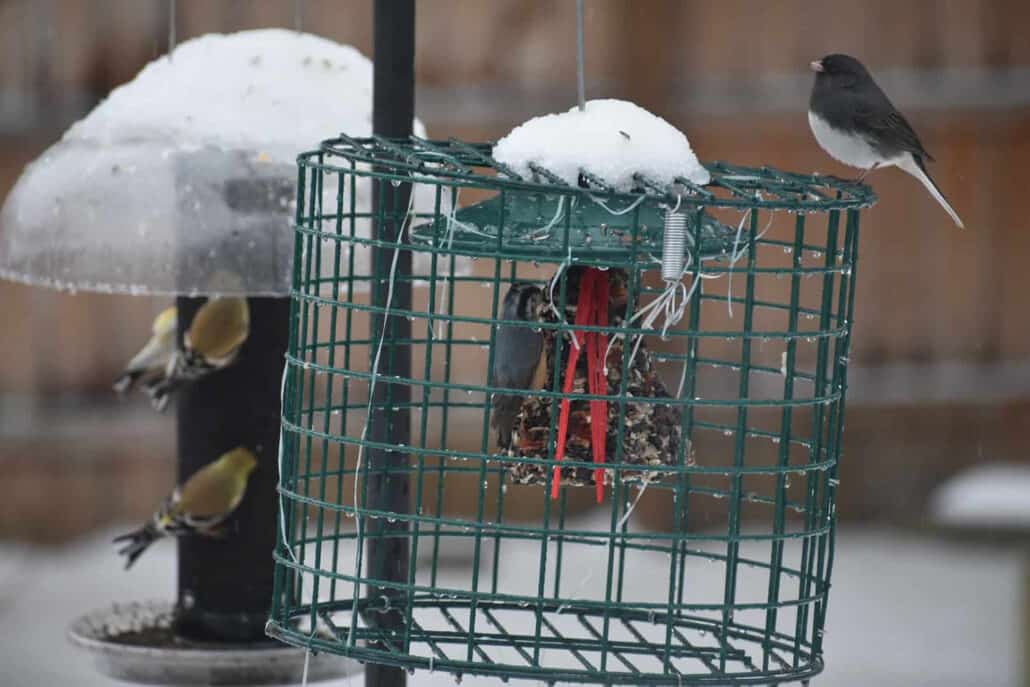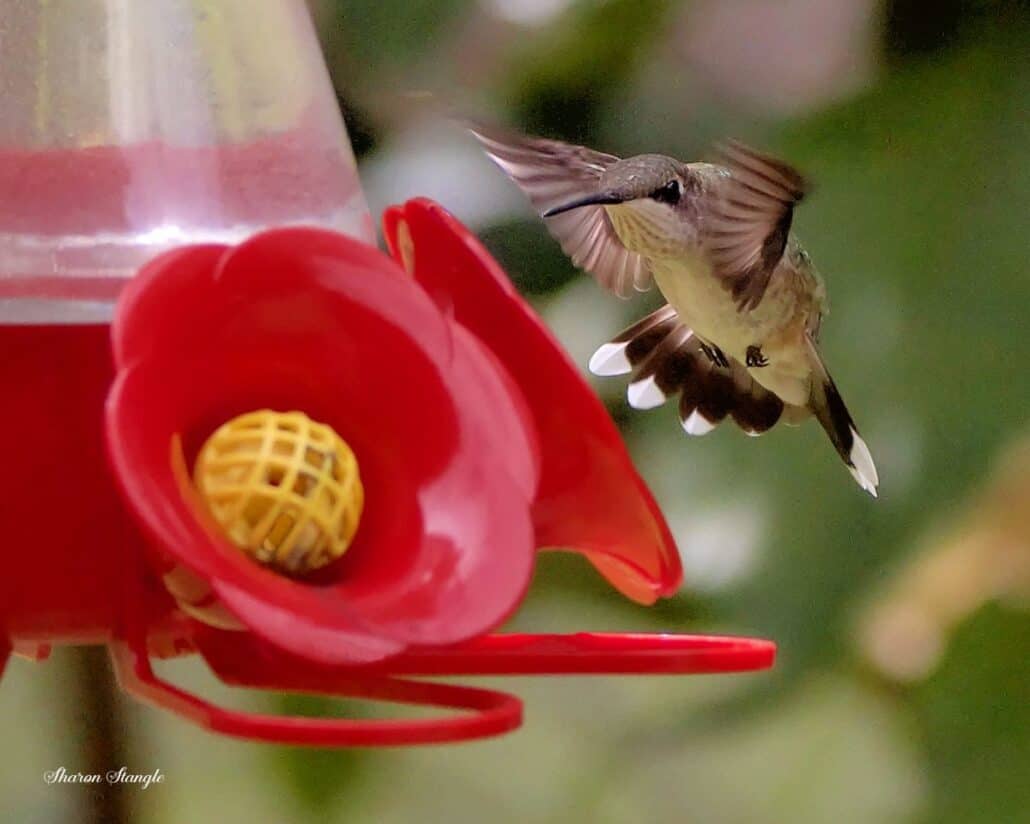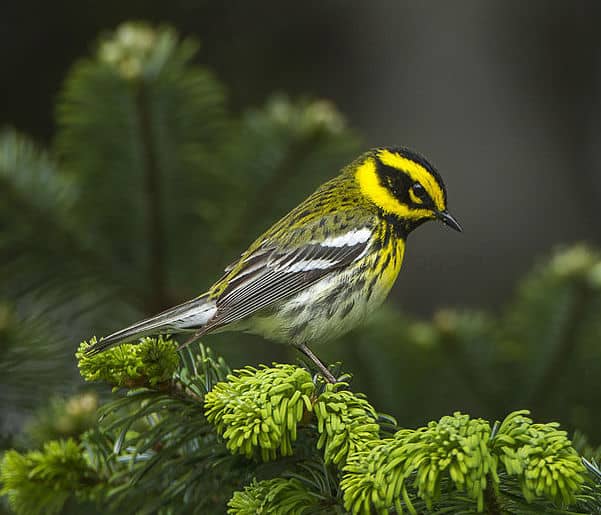It’s wintertime here in Ohio, and that means keeping an eye on the weather forecast on the regular. As a steady supplier for backyard birds of Nyjer, raw peanuts, mixed-seed blends, and specialty blends for my woodpecker buddies, I have a reputation to maintain. Precedents have been created; expectations have been established. My mission: provide these birds with fresh food from clean feeding stations, year-round.

Last Friday, I saw that a wintry mix was headed for the Ohio Valley, and in fact it was predicted to begin the very next day. The time was nigh—so I devoted a portion of my Saturday afternoon to cleaning and restocking my bird feeding stations.
Fortunately, I’d cleaned the peanut feeder recently, so I only needed to scrub the hopper and cylinder feeders. The cylinder feeder in particular has been a veritable hotbed of activity the past few months, as the American goldfinches gluttonously gobble all of my offerings. (A curious sidenote: I recently switched brands of Nyjer, and I’ve found that the Nyjer I find at my local nursery is noticeably more popular than the previous brand I bought. I have to wonder if the local Nyjer is fresher?)
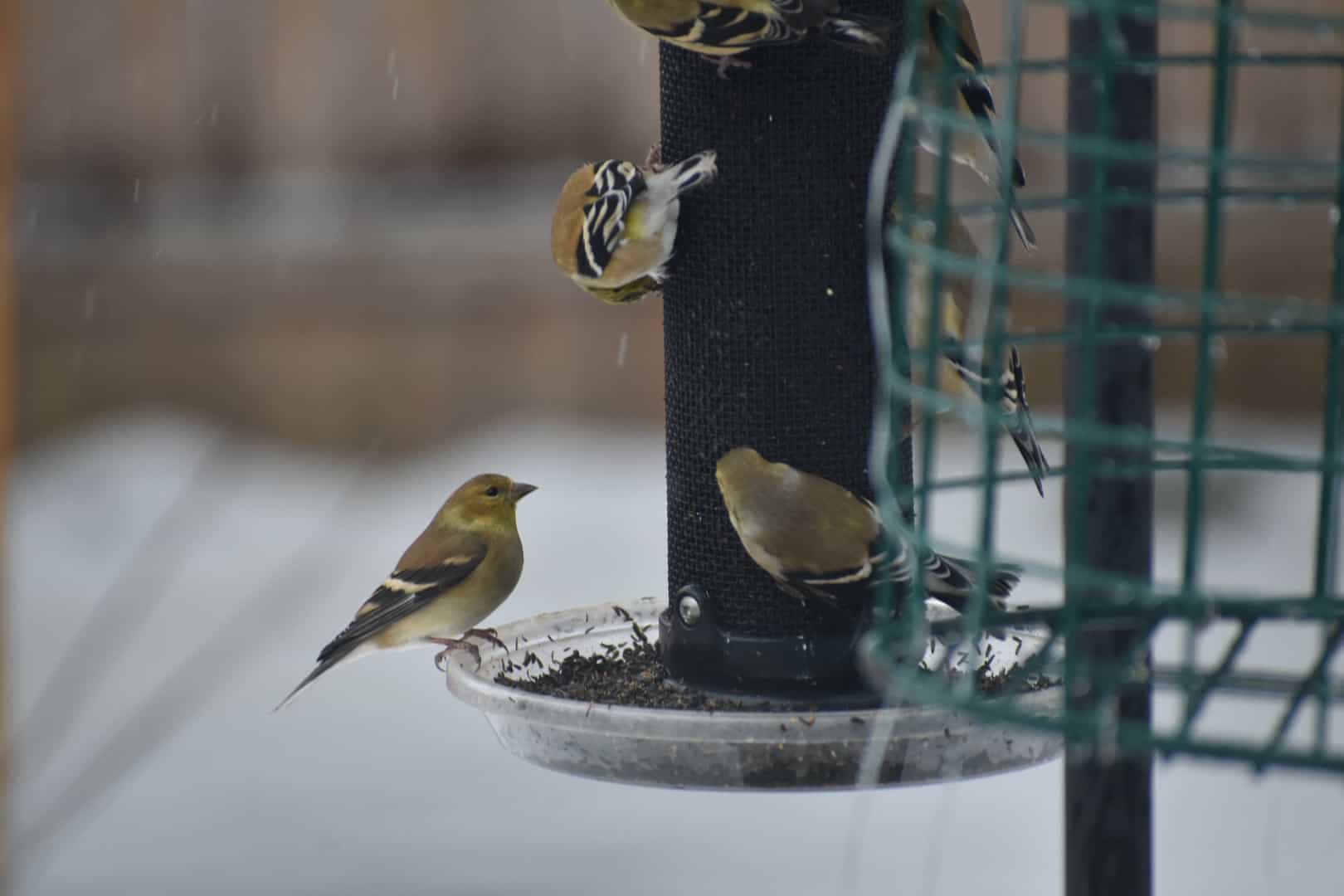
First up: staging the necessary supplies. I broke out the scrubber brush (complete with bite marks on the handle, courtesy of my senior hound dog, who chews random items for vindication’s sake), a small container for the 9:1 ratio of hot water to bleach that I would use to sterilize while cleaning, and a watering can to rinse all the clean items.
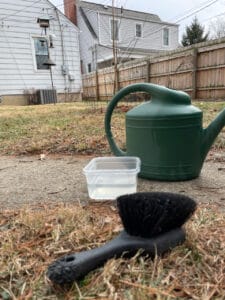
I brought the supplies and the bird feeders back behind my garage, disassembling each feeder for thorough cleaning. I disposed of the remaining Nyjer, as it had gotten a bit clumpy toward the bottom. (Monitoring Nyjer’s freshness is key to maintaining the integrity of your feeding station.)
Then I scrubbed each feeder part with the bleach water, rinsed the items, and allowed them to dry in the sun, grateful for the mild 40°F weather. While I was at it, I raked away old hulls and debris from the area beneath the feeders. Ground-feeding birds like dark-eyed juncos, white-throated and song sparrows, mourning doves, among others, also frequent my yard, and it’s critical to ensure that their “plate” isn’t filthy, either!
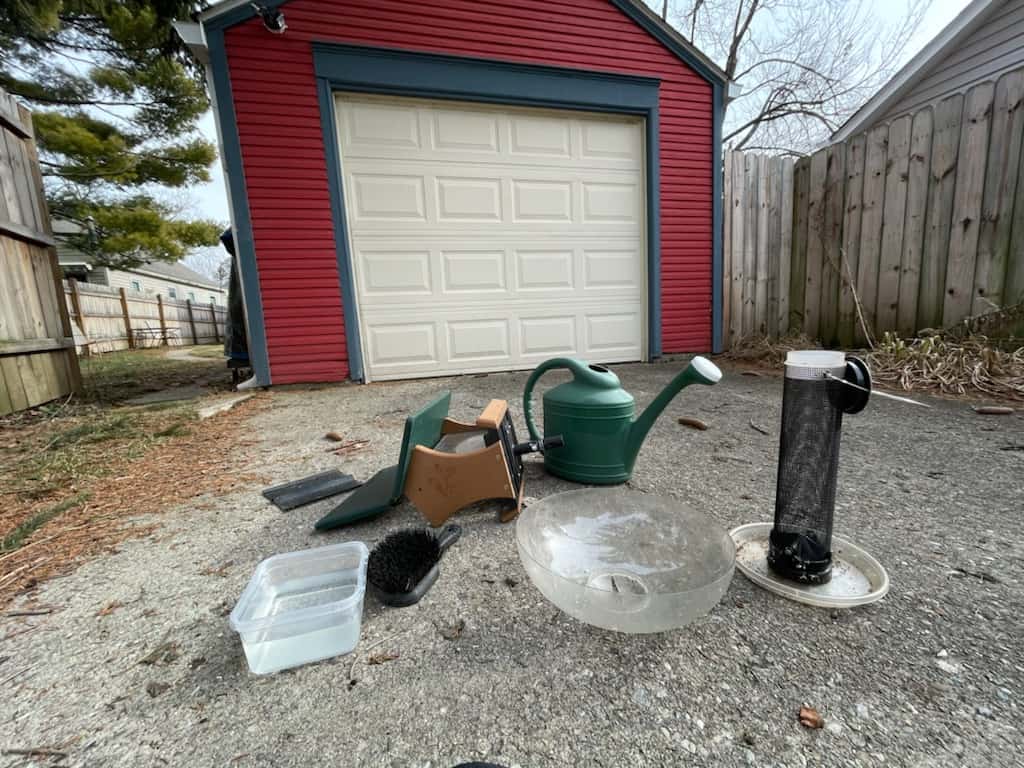
Less than 24 hours after I reassembled and filled the feeders, the snow had arrived—and so had my avian visitors!

It’s tempting to think that bird feeders only need to be cleaned when the weather is humid and damp. Unfortunately, mold finds a way, as they say, and bird droppings occur just as regularly during winter as they do in summer. Preventing disease is the main reason to clean feeders regularly, but it’s just as much an aesthetic issue. I like taking photos of the feeder visitors. But bird poop and seed hulls? Not so much.

